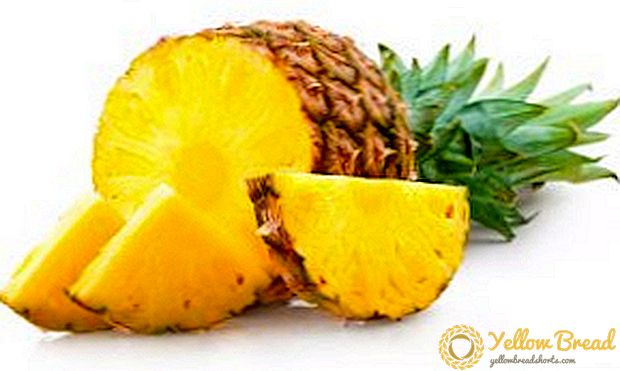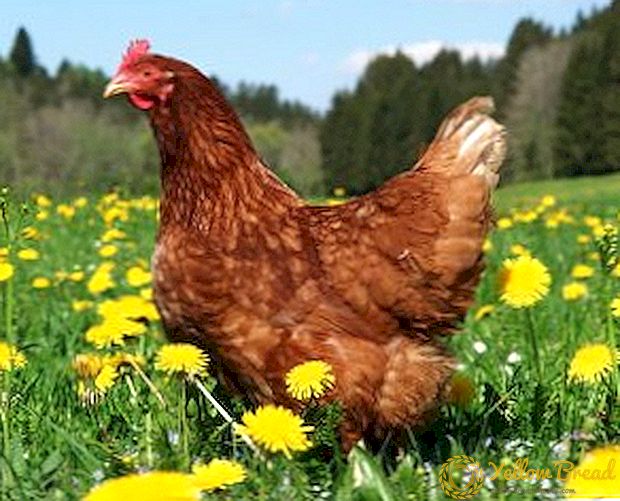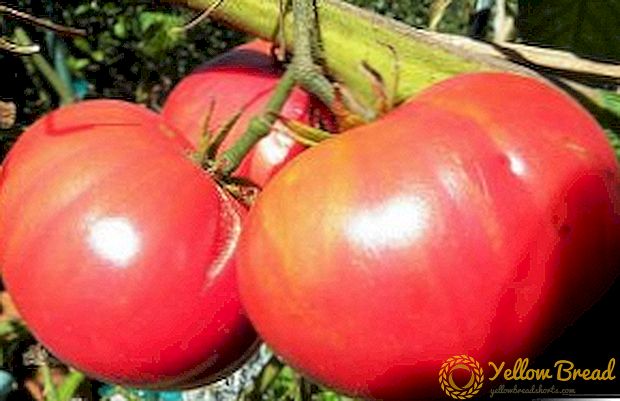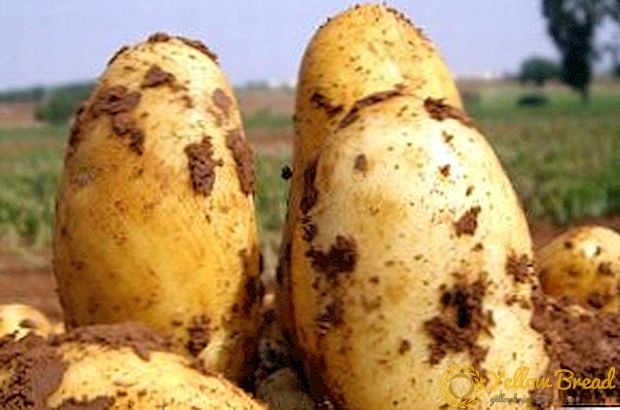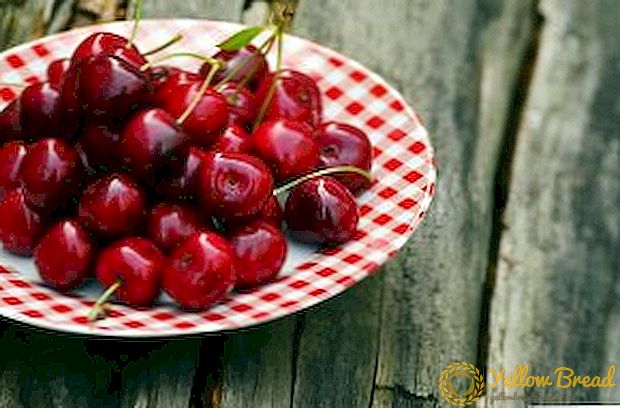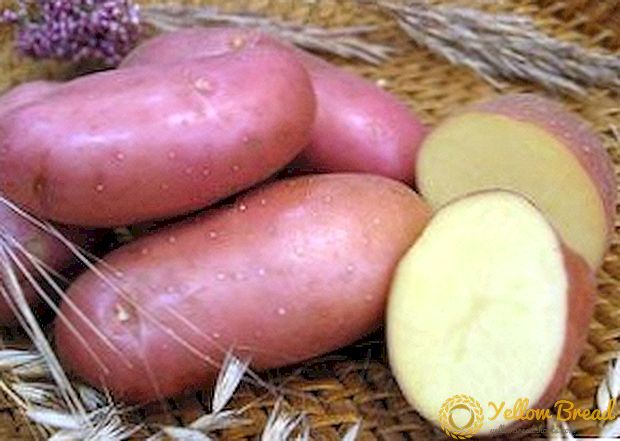 Gardeners continue to search for the most fruitful and early ripe types of potatoes constantly. Recently, the potato variety is becoming more and more popular. Red Scarlett, a characteristic which does not leave indifferent.
Gardeners continue to search for the most fruitful and early ripe types of potatoes constantly. Recently, the potato variety is becoming more and more popular. Red Scarlett, a characteristic which does not leave indifferent.
- Description of the variety
- Shoots
- Fruit
- Features of growing
- Landing spot
- Soil requirements
- Correct fit Red Scarlett
- Optimal timing
- Preparation of planting material
- Landing pattern
- Features care for the variety
- Diseases and pests
- The advantages and disadvantages of the variety
Description of the variety
This potato is the work of Dutch breeders. It was obtained recently, but quickly took a worthy place due to good yield, precocity, excellent keeping quality and transportability, smoothness and shape of tubers.

Shoots
Red Scarlett sprouts are low, semi-upright, bush type - intermediate. On the shoots bloom green, slightly wavy at the edges of the leaves of medium size.
During the flowering period, potatoes form medium-sized red-purple (sometimes light purple) inflorescences.
Plant - thick, compact, forms and develops quickly. 
Fruit
The Red Scarlett potato tubers have an elongated oblong shape; an unusual raspberry-pink shade is noted in the description of the variety. The flesh is white or slightly yellowish, it has excellent taste. The tuber has small, almost imperceptible and shallow (up to 1.5 mm) yellowish eyes.

Fruits when ripening come in different sizes, but usually reach 80-120 g. In good years you can get tubers up to 150-180 g.
In one nest, 10–22 fetuses are formed and develop, which ripen evenly, therefore, as a rule, the crop is of the same size.
Features of growing
According to breeders, Red Scarlett can be grown in any climatic conditions, but the best places for it are the Central and Southern regions of Russia. Perfect climate for this potato - wet and cool. 
Landing spot
Plot for planting potatoes should be chosen, adhering to the rule of alternation of crops. It is impossible to plant the same crops in the same place every year. For example, Red Scarlett will grow better after legumes.
For the cultivation of potatoes can not use lowland places. In addition, for a good harvest, you need to cultivate potatoes on well lit areas.
Soil requirements
There are no special requirements for the soil (except fertility) Red Scarlett does not impose. However, the ground must be prepared in the fall. For this, it is necessary to fertilize the earth with organic fertilizers (compost, humus, and mullein) in the autumn processing of the plot. You can feed the soil with peat.
 For the prevention of parasites and to reduce the acidity of the soil, it can be lime, chalk or dolomite flour.
For the prevention of parasites and to reduce the acidity of the soil, it can be lime, chalk or dolomite flour.Correct fit Red Scarlett
Competent planting process - a pledge not only a good harvest, but also the ability to reduce labor costs with the further cultivation of potatoes.
Optimal timing
This potato variety should be planted after the soil warms up to + 10ºC (in our region it is April-May). It is under this condition that the plant adapts quickly and takes root well, and shoots will appear soon and together. 
Preparation of planting material
Before planting potatoes on the site, it must be germinated. For planting choose only healthy, strong tubers. They can both be purchased on the market and use the fruits of the previous season.
When choosing planting material should be borne in mind that the tubers should not be rot and damage.
Usually for planting are selected medium sized potatoes.
Selected tubers are planted in a box and put sprouting into germination in a bright and warm, but not hot (+ 15-16ºC) place. For the uniform germination of eyes, the tubers must be turned every 5-7 days.
After shoots about 2-2.5 cm in height appear, potatoes can be transplanted. Large tubers can be cut into pieces, leaving 2-3 eyes each. At the same time, the weight of each element should be 50-70 g. The cut tubers are not planted immediately - they have to dry for a couple of days. If you plant them immediately, they can rot.
If the potatoes are not germinated before planting, it can be heated at a temperature of 37-40ºC. This will help cause arousal, activates the growth of kidneys and germination. 
Landing pattern
The planting plan is quite simple, but the simplicity of future care will depend on it in the future. Competent landing implies compliance with the following actions:
- The first bed planted "on a thread." To do this, you can take two small pegs and set them along the edges of the row. Between these sticks they stretch the line or twine.
- Along this pointer, dig shallow (12-15 cm) holes, the distance between which should be 60-70 cm.
- Carefully, in order not to damage the sprouts, put the potatoes in the fossa with eyes up.
- After the bed is finished, you can proceed to the formation of the second row. The distance between them should be 120-140 cm.
- After all the beds are planted, the land is leveled and flooded.

Features care for the variety
As many gardeners know, the correct planting does not guarantee a good harvest if you do not take care of the plant. And Red Scarlett also needs care, which is as follows:
- After the appearance of the first shoots on the beds, crests of 20–25 cm high and 75 cm wide are formed
- At least 5-6 times per season, the bushes are treated with herbicides. It is recommended to alternate drugs. This will increase the resistance of the culture to various diseases.
- Constantly monitor the soil moisture (especially during the flowering and fruit formation) and make additional fertilizing. Potatoes respond well to calcium, nitrogen, magnesium and manganese.
- After heavy rains and watering, the top layer of soil must be plowed up to prevent the formation of a crust.
- Weeds should be removed immediately after planting and prevent their spread.
- Before harvesting, for 10-14 days, the tops are removed from the garden.

In addition, it is important to adhere to the timing of the harvest. Since Red Scarlett belongs to the early varieties, the crop will be removed in late August.
Diseases and pests
Potato Red Scarlett is distinguished by a positive characteristic not only for its taste and unpretentiousness in the care, but also a rather high resistance to such diseases:
- golden potato nematode;
- late blight tuber;
- PVYn virus.

This potato has a relatively stable immunity to late blight of the tops, Alternaria, scab. But this can be avoided if, as a preventive measure, before planting, we treat potatoes with boric acid or copper sulfate.
Red Scarlett, like other varieties of potatoes, is very fond of the bear and the Colorado potato beetle. To get rid of the bear, in her hole pour a solution of vinegar (3 tablespoons to 10 liters of water).They fight with the Colorado potato beetle, collecting them from the leaves or using modern chemicals. 
The advantages and disadvantages of the variety
In addition to unpretentiousness in cultivation, the love and veneration of gardeners, the variety received for such qualities:
- short period of full vegetation (65-70 days);
- nematode resistance;
- good yield;
- excellent taste;
- does not change color when cooking, does not boil soft;
- high drought resistance;
- good transportability;
- long preservation of the presentation, does not darken from shocks;
- good keeping quality of fruits.
Observing all the simple rules of planting and caring for potatoes, with minimal effort, you can provide yourself with excellent quality stocks for the whole winter.

